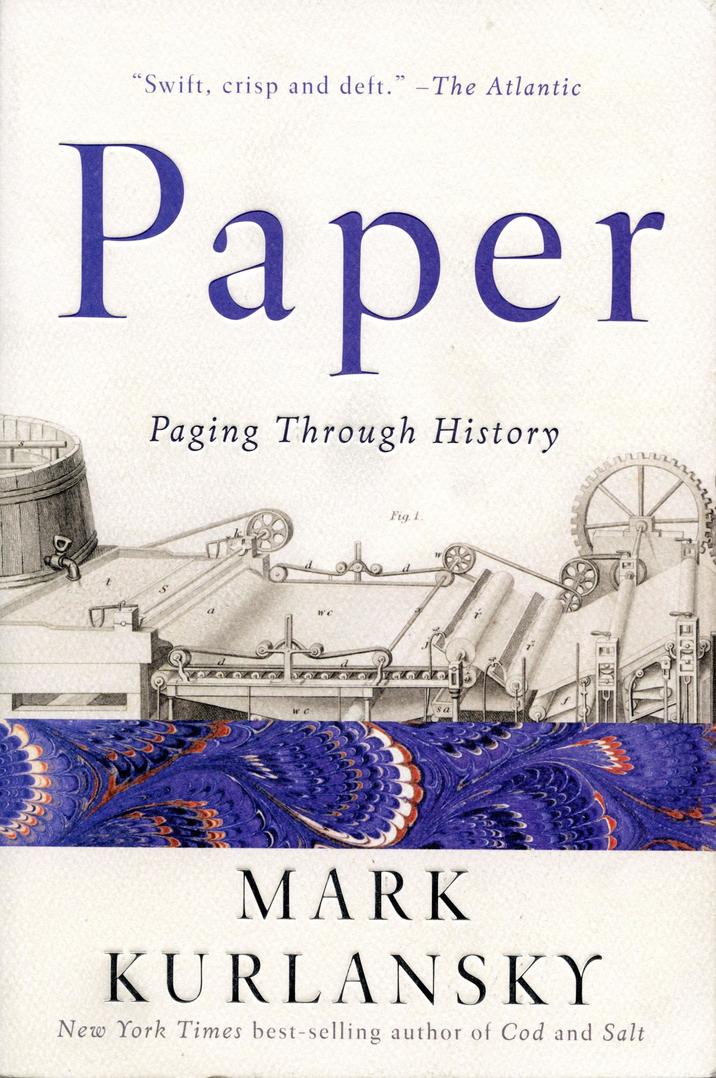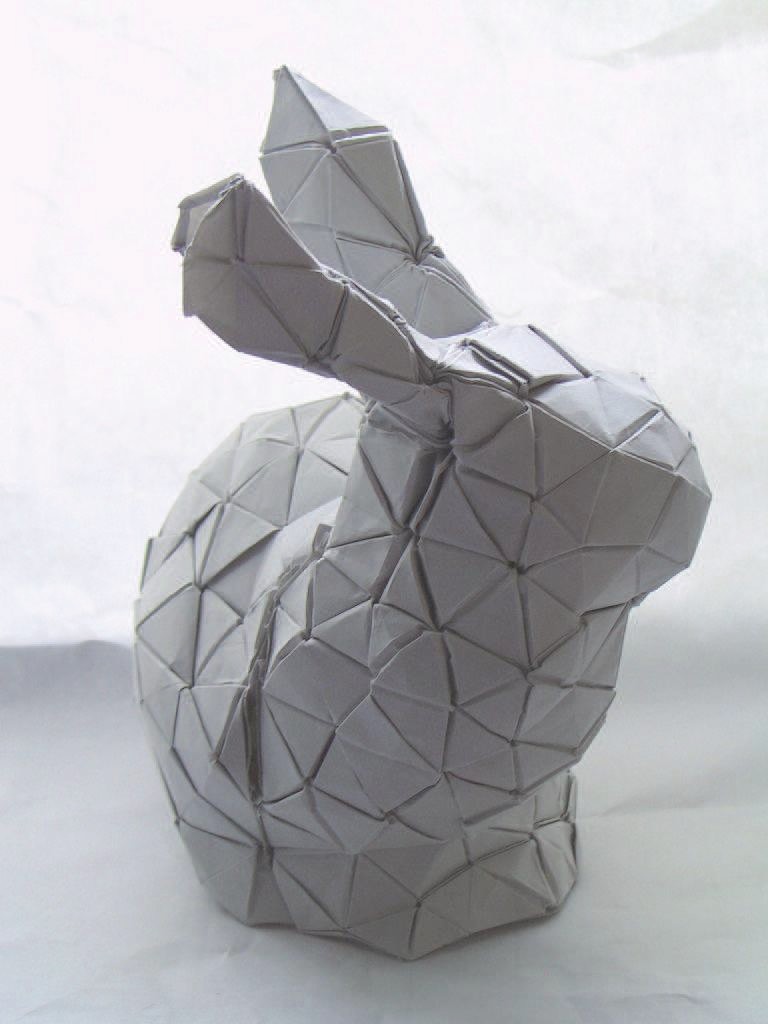
Mark Kurlansky, Paper: Paging Through History. W.W. Norton & Company, 2017, xx+389 pp.1 Paperback, US$16.95. ISBN 978-0-393-35370-9.

Mark Kurlansky is well known as the author of several books on seemingly narrow topics, such as salt2 and the codfish,3 but which actually range far and wide. Paper: Paging through History is another of these. For instance, this book addresses the histories of writing, printing, and paper, with the thesis that more people were becoming literate, thus requiring a practical writing material (paper), and getting all those words onto the paper requiring printing.
The book also discusses the histories of these topics in the Far East, Middle East, Europe, and America, starting in 3500 bce. The author also brings in his beliefs about the ways of innovation: new technology doesn’t enable societal changes so much as societal changes require new technology, and new technology doesn’t drive out old technology but rather the old continues to exist beside the new. There is no doubt considerable truth to Kurlansky’s assertions, but I see them as a little too black and white.
Since Kurlansky has written about 17 nonfiction books on lots of different topics, he can hardly be an expert on all of them and thus I doubt readers can assume the book is precisely accurate at all times. Also, he was a journalist for 15 years, and his books lie somewhere between journalistic and academic studies.4 However, even if Kurlansky glosses over some things or occasionally makes a mistake, I see the book’s value as being an easy to read, integrated introduction to the histories of (a) paper and the methods of making it and its myriad uses, (b) writing, materials upon which to write, and substances for writing leading up to ink, and (c) printing. It makes a lot of sense to treat these three areas together.
The book’s presentation is generally chronological. However, with such a broad scope and so much to share from his research—“Littered with facts”, is a blurb on the book’s half title page by Lily Rothman in Time)—the organization of the content into chapters seems a little forced. Also, the chapter titles (e.g., “5: Europe between two felts”, “15: Invitation from a wasp”) don’t help the reader understand the structure of the book; they make some sense after one has read a chapter—mostly not before. Nevertheless, it is lots of fun to read all those tidbits and to see the logical connections the author tries to make.
Here are some example bits of information.

I had read a lot about the history of printing and a book on the history of writing before reading this book about paper; this book was a good reminder of that prior knowledge while also telling me the fascinating story of paper. I definitely recommend the book to anyone who has not previously studied the history of paper and its relationship to writing and printing, including young people.
An aside. In these days of increasing home schooling I think this book could be used to show the child and parent the ways of innovation and how societal need and technology are interleaved, as well as of course conveying the specific histories of writing, paper, and printing. The book also touches on environmental and sustainability issues. Also, given the topics, hands-on craft projects would be a natural adjunct to studying the book. Certainly studying this book would have been a lot more interesting than the standard curriculum that I went through in my K-to-12 days in California public schools.
The thought about home schooling came to mind because late in the book the author mentions contemporary users of paper including a move from origami as craft to origami as sculpture (as shown in Figure 1). In this context the author also mentions Eric Demaine, whose Ph.D. thesis was a ground-breaking contribution to the field of computational origami. Demaine was home schooled: http://news.mit.edu/2003/demaine-0226.
The type note at the end of the book says the book was
set in Dante, designed by Giovanni Mardersteig in
1954.
 nderneath that explanation, the note also says
the historical-initials-like images (a copy of one starts
this paragraph) at the beginning of the first paragraph
of each of the book’s almost twenty chapters are based
on an alphabet designed by Albrecht Drer in 1525 and
cut into linoleum by the book’s author. Missing from
this colophon is anything about the paper with which
the pages and cover of the book are made: weight, surface
finish, source mill or company, and so forth. Having read
this book by Kurlansky, I now believe colophons should
routinely talk about a book’s paper as well as its type.
nderneath that explanation, the note also says
the historical-initials-like images (a copy of one starts
this paragraph) at the beginning of the first paragraph
of each of the book’s almost twenty chapters are based
on an alphabet designed by Albrecht Drer in 1525 and
cut into linoleum by the book’s author. Missing from
this colophon is anything about the paper with which
the pages and cover of the book are made: weight, surface
finish, source mill or company, and so forth. Having read
this book by Kurlansky, I now believe colophons should
routinely talk about a book’s paper as well as its type.
Still, as befits a book on the history of paper, the paperback cover is stylish. The title and author’s name are nicely debossed into attractively rough cover paper. I decided to buy the book the instant I glanced at it on the bookstore’s new arrivals rack—and, having read it, I am very glad I did.
The book’s page count includes three useful auxiliary resources—an 8-page timeline, a 6-page bibliography, and a 36-page index.
Cod: A Biography of the Fish that Changed the World.
Paper is the book by Kurlansky which I have found most interesting among the other books I have read by him. (The Basque History of the World was the next most interesting.)